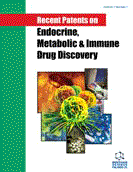Abstract
Massive pulmonary embolism (MPE) is characterized by high mortality. Two thirds of patients die within the first hour of MPE presentation. Significantly lower mortality could be achieved by using the optimal therapeutic dose of plasminogen activators (PAcs). It was expected that Retavase, mutant of wild type t-Pa, would be more efficient in thrombolysis than Activase, due to its longer half-life and enhanced ability to penetrate thrombus due to lack of fibrin attachments. Moreover, the regulation of endogenous TAFIa activity was tested by its inhibition by (PCI). The efficacy and safety in newly developed treatment model of rabbit MPE was tested by PAcs, Activase and Retavase and PCI, direct TAFIa inhibitor. Net clot radioactive thrombi, minced on specific size were injected into left jugular vein simulating MPE. Autologous rabbit blood clot was stabilized for one hour before mincing and injection at room temperature. Treatment was instituted instantly with doses of tested therapeutics divided equally into an immediate bolus and infusion over 60 minutes. Control group was treated with saline. No statistically significant lysis, compared to saline control, was seen in Retavase doses of 0.25, 1mg, 2mg, but significant lysis was seen for the dose of Retavase 0.5mg (p < 0.05). Statisticaly significant lysis (p < 0.05) was seen for all doses of Activase. In dose of Activase 0.5mg was seen high statistical significance (p < 0.001) compared to saline control. Both Activase and Retavase showed a maximum lysis effect at the dose of 0.5mg/kg. The loss of radioactivity in the saline group was considered as endogenous clot lysis. The lytic ability of PCI was similar to Saline innate lung thrombolysis. Statistical significant bleeding, compared to the saline control, was seen for doses of Retavase and Activase, except Activase 0.25 mg. Highly statistical significant bleeding was observed using dose of 0.25 mg Retavase (p = 0.0019) and dose of Activase 2mg (p=0.0041) compared to the saline control. Activase demonstrated distinct thrombolytic capacity over Retavase in rabbit MPE study. PCI inhibitory potential has to be further examined and later tested in higher doses or in combination with lytics to reexamine its TAFIa regulatory potential during MPE. This article also discussed recent patents relevant to the field.
Keywords: Massive pulmonary embolism (MPE), Lung thrombolysis, thrombolytic dynamic efficacy and safety, rt-PA recombinant tissue plasminogen activators (activase, retavase), TAFIa inhibition
 12
12





















